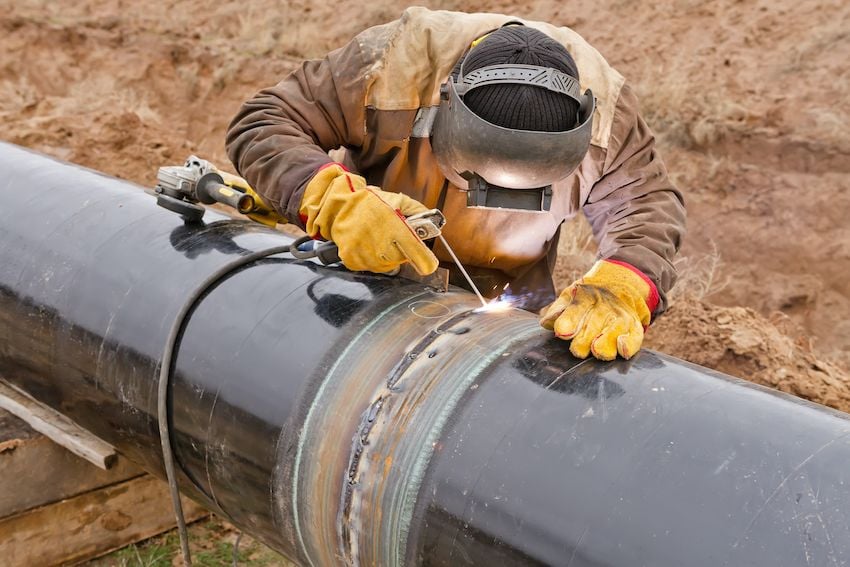The COVID-19 pandemic turned life upside down almost a year ago. Your workers have adapted, but many might not be coping as well as you think.
In October 2020, the American Psychiatric Association (APA) found nearly two-thirds of Americans (62 percent) felt more anxious than last year at this time. Of this group, 75 percent said COVID-19 was a top issue making them extremely or somewhat nervous.
Now, more than ever, it’s important to prioritize utility worker safety. Here’s a look at the positive impact you can have by holding safety stand downs that focus on mental health.
How mental health safety stand downs improve utility company safety
1. Recognize mental health issues faced by essential workers
According to the Centers for Disease Control and Prevention (CDC), 40 percent of U.S. adults reported struggling with mental health or substance abuse in June 2020. The main issues included anxiety and depression (31 percent), trauma and stressor-related disorder symptoms (26 percent), substance use (13 percent), and suicidal thoughts (11 percent). These issues are disproportionately worse among essential workers.
At least 55.2 million Americans are essential workers, according to 2019 data gathered by the Economic Policy Institute. This includes 1.3 million workers in the energy sector. Your workers have been out in the field throughout the pandemic. Not having the ability to work from home puts them at a greater risk of contracting COVID-19, which can be very stressful.
In fact, 33 percent of essential workers know someone who has tested positive for COVID-19, according to the Kaiser Family Foundation (KFF). Tragically, 13 percent also report knowing someone who died from complications related to the virus.
Holding mental health safety stand downs is a great way to acknowledge the anxiety many of your team members feel coming to work each day. Being employed by a utility company that cares and wants to help will make them feel valued.
Look: 7 Steps for Successful Safety Stand Downs
2. Highlight common mental health problems related to the pandemic
Your workers might be struggling through the pandemic but unable to get to the root of the problem. Using your mental health safety stand downs to help them recognize issues they’re facing is an effective worker safety risk management technique.
Approximately half of essential workers (49 percent) say the COVID-19 crisis has caused them to suffer at least one negative health effect, according to the KFF. This includes trouble sleeping (31 percent), poor appetite or overeating (30 percent), frequent headaches or stomach aches (17 percent), increasing their alcohol or drug use (13 percent), difficulty controlling their temper (13 percent), and worsening chronic conditions like diabetes or blood pressure (5 percent).
Knowing other people are suffering from the same problems will help workers feel less alone. This can encourage them to seek support in managing these conditions, as it will help them overcome the stigma related to mental health issues.
3. Help employees find healthy ways to cope with stress
The COVID-19 vaccine is here, but it could be some time before your entire team is inoculated. Approximately 55 million doses of the COVID-19 vaccine have been distributed in the U.S., as of Feb. 17, 2021, according to the CDC. President Joe Biden has said there will be enough vaccines for 300 million Americans by the end of July, according to CNN.
This means it will still be some time before the pandemic ends. So, suggesting healthy ways to deal with stress in your mental health safety stand downs can improve utility worker safety.
The CDC has shared many recommendations, including limiting news to a couple of times per day and disconnecting from all devices, virtually connecting with others, making time for healthy hobbies, and taking care of your body. This means encouraging employees to engage in activities like exercising regularly, getting plenty of sleep, and eating healthy.
Read: Worker Safety New Year’s Resolutions For Construction and Utility Companies
4. Provide resources for those struggling to manage stress
Most workers with benefits (70 percent) know how to access mental health services, and 62 percent are at least somewhat comfortable doing so, according to a 2019 survey conducted by the APA. However, more than one-fourth do not know how to seek mental health benefits through their employer.
If your company offers mental health benefits, focus one safety stand down on guiding workers through the process of accessing those benefits. You might think the process is obvious, but it’s possible some people are confused by it.
There’s also plenty of online resources available to share with your team. For example, the CDC Foundation’s “How Right Now” site was created to help people deal with grief, loss, and worry during the pandemic. Mental Health America also has a variety of available information to help people cope with the mental aspects of the COVID-19 crisis.
5. Find out what employees need from you
The vast majority of essential workers (82 percent) feel their life has been at least somewhat disrupted by the pandemic, according to the KFF. As an employer, you’re in a position to help make workers’ lives easier during this stressful time.
Mental health safety stand downs can be a great way to check in with your team and find out what you can do for them. Workers might have suggestions on mental health resources they’d like to receive, which you can pass along to HR or other appropriate departments. Or, they could have ideas for improved social distancing that you can enact. This is a great way to open the lines of communication, so they know you want them to be part of the conversation.
There’s no doubt mental health safety stand downs are needed at your utility company. By starting this initiative, you’re letting workers know they come first.
For more on the topic of utility worker safety, check out the blog “Winter Safety Tips to Prevent Workplace Accidents and Injuries.”

